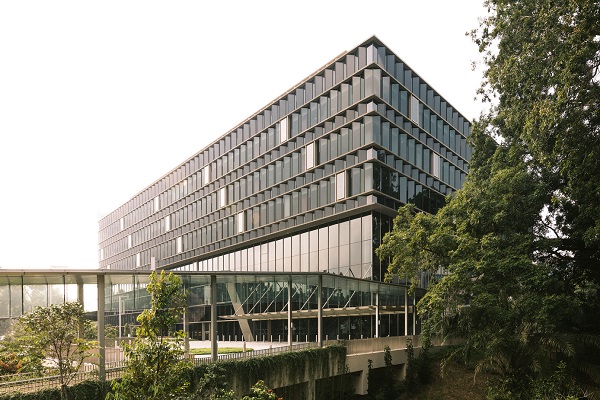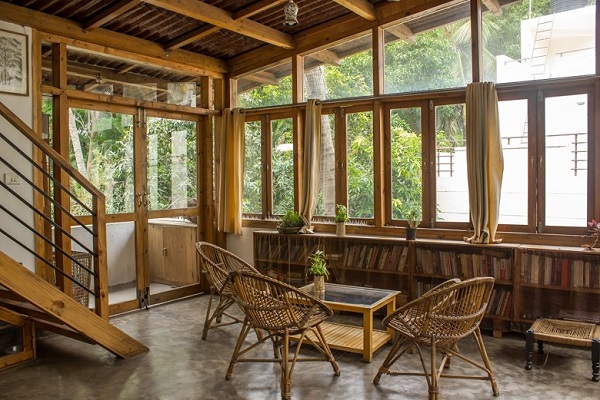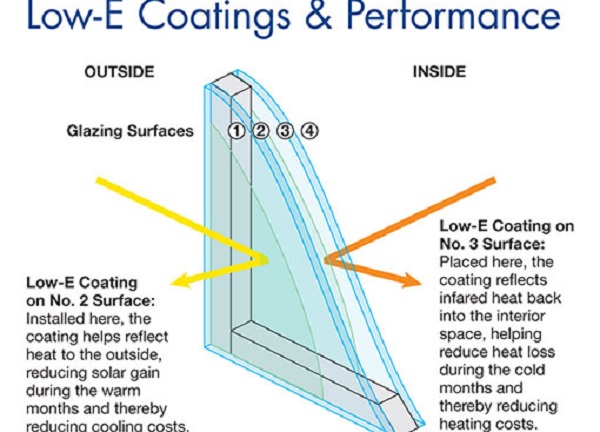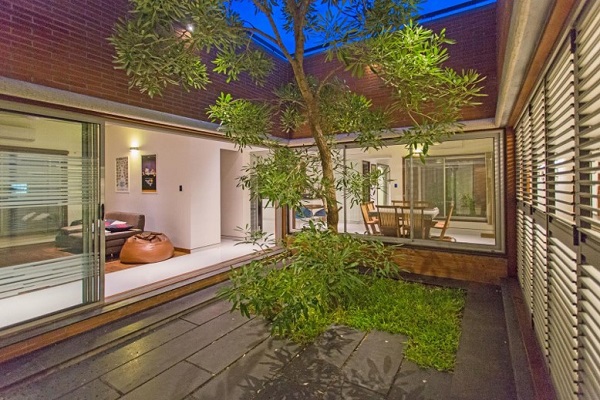



© Serie Architects; 5 Sciences Park Drive, Singapore by Serie Architects
From hand blown glass flattened for the first time to huge manufacturing plants producing tons of glass sheets everyday around the world, our explorations with glass have always been informed by aesthetics and sustainable practices. With recent technological advancement, any drawbacks in the process of making, using and recycling glass have been replaced with sustainable solutions. Similarly, lacquered glass, textured and tinted glass, digitally printed glass, etc. have been explored to meet aesthetic requirements across the globe.
Today, not only is manufacturing glass sustainable, but its correct applications in architecture and interiors can drastically change the performance of a space. Due to its flexibility as a material, it has kept up with the evolving architectural styles through early Egypt or Mediaeval Europe to the Modern Architectural era. Its versatility helped glass evolve from decorative ornamentations to become an integral element of a structure.
Sustainability is cyclic, hence, it is necessary to consider the entire life of a material instead of just its tenure as a part of the building. So let's look at glass as a building material, and discuss sustainability in the order of its lifecycle.

Source: Saint Gobain
Glass is sustainable from its origin to its demise. Glass is a resource efficient material, it is composed of naturally abundant raw materials such as sand. Glass production has changed greatly in recent years. A huge percentage of the raw material comes from old glass now, which is recycled.
At the end of its life, glass is 100% recyclable. Broken/recycled glass called cullet is melted down and used to produce more glass products. Cullet has a much lower melting temperature than the raw materials and therefore requires around 40% less energy to create the molten glass. In Europe in 2011,emission of more than 7m tonnes of CO2 was avoided, which is equivalent to taking four million cars off the road.

© Mayapraxis Architects Project Kachra Mane, Bangalore
One great example of reusing glass is the Kachra Mane in Bangalore, by Mayapraxis. Literally translating to ‘Scrap House’, Kachra Mane was designed using reused packaging pine wood to make the structure, wooden frame with corrugated bamboo matt board roof, and salvaged glass. The exterior walls are made from salvaged and recycled; pinewood and big running windows made from reused glass. These fenestrations allow ample natural light into the interior spaces.
Thermal performance of any space is affected by natural elements like sunlight, wind, regional climate and temperature, humidity, etc. All these factors contribute to designing for the comfort zone.
Considering the regional climate, different kinds of glass can be used for the right context to optimise thermal performance. An interesting development is the thermally insulating glass (also known as low-emissivity or low-E glass). The thermal insulation values of glass have improved with technology, due to high-tech mixtures. Buildings with such glazing thus have a significantly higher energy efficiency.

Source: Ultraglaze - Energy Efficient Window films
One such example is the Srikanth and Gita House in Chennai by KSM Architects. Due to high temperatures throughout the year in Chennai, it was necessary to reduce the indoor heat gain. Double walled masonry with hollow clay brick used externally combined with high performance double glazed windows have been used to achieve the required thermal performance.

© BRS Sreenag. Project : Srikanth and Gita House, Chennai by KSM Architecture
Another major element that consumes huge amounts of energy is HVAC, our solution for the natural factors of sunlight and wind. Passive design strategies are used to reduce energy consumption and create sustainable spaces. Glass is a uniquely amazing material that provides physical protection while allowing sunlight into the space. This allows designers to modulate the inner temperature by controlling the light (and heat) entering a space, and reduce the use of artificial energy consumed by lights and ventilation systems.
Simple design strategies such as orientation of building, insulating walls, providing the right window to wall ratio and designing for context contribute to responsive design solutions.
Glass went from being used as ornamentations to windows and openings to a versatile material that has also entered the structural aspect of architecture. Structural glass is a frameless assembly of glass which becomes an integral part of the structural framework of the building. This can include glass walls, floors, roofing, etc. Structural walk on glass panels can be used to make glass bridges or walkways. These are minimally supported by steel, but high specification structural glass beams can also be used to maintain material homogeneity. Glass can additionally even be used as balustrades or railing.
One exemplary example of glass being used structurally is seen in the Mountain House designed for bollywood actor Kangana Ranaut in Manali, by Shabnam Gupta of The Orange Lane Studio. A special feature of this house, the glass conservatory is made entirely of glass (3 walls and roof supported by steel beams and columns that form a structural framework). This space offers unending views of the mighty Himalayan ranges.

© Ashish Sahi. Project : Kangana Ranaut’s Residence, Manali by The Orange Lane
Glass can be used in a myriad of ways, structurally. But can it also be used at what may seem to be the end of its lifecycle? Research shows that recycled waste glass, when incorporated with concrete either in powder form or crushed as an aggregate, improved the mechanical strength of the concrete.
Glass is a versatile, strong and highly innovative material, which moulds itself according to its design. Thus, glass is one material that allows designers and home builders to explore sustainability from the perspective of comfort, environment, performance and aesthetics.
How is glass considered a sustainable material?
Glass is considered a sustainable material because it is 100% recyclable and can be reused indefinitely without losing quality. Additionally, advancements in glass production have made it more energy-efficient, reducing its environmental impact during manufacturing and use.
What are some environmental benefits of using glass in construction?
The environmental benefits of using glass in construction include improved energy efficiency through the use of solar control and insulating glass, which helps reduce cooling costs. Glass also allows for natural light, reducing the need for artificial lighting and lowering energy consumption.
How does glass contribute to energy efficiency in buildings?
Glass contributes to energy efficiency in buildings by providing thermal insulation, reducing heat loss in the winter and minimizing heat gain in the summer. High-performance glass, such as double glazing and solar control coatings, enhances a building's energy performance, leading to lower energy bills and a reduced carbon footprint.
What role does recycling play in the sustainability of glass?
Recycling plays a significant role in the sustainability of glass, as it allows for the material to be reused without depleting natural resources. Recycled glass reduces the need for raw materials, lowers energy consumption in production, and decreases the amount of waste sent to landfills.
Why is glass a preferred material for green building design?
Glass is a preferred material for green building design because of its ability to enhance natural light, improve energy efficiency, and be fully recyclable. Its versatility and performance make it an essential component in sustainable architecture, contributing to healthier, more environmentally friendly buildings.
An Architect, a writer, a traveler, a photographer and much more, Shivani Chaudhary is, among all, an Architectural Journalist, trying to bridge the gap between the architectural community and the world. Read More